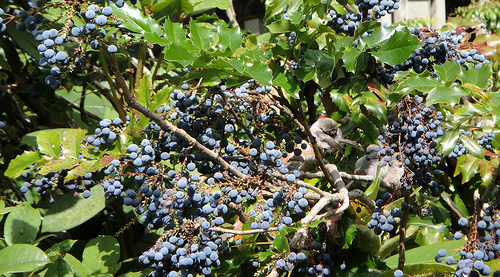Seattle greening its landscape with updated building code
Posted on August 17th, 2012 by Andy

Oregon grape, native Pacific Northwest plant. Photo courtesy of heystax via Creative Commons License.
Green Seattle has always been on the forefront of promoting native plants and encouraging the removal of invasive weeds to support a healthier environment. But now, the city is taking it one step further. It is proposing to write such requirements into the city’s building code. Planning officials are in the process of getting public input on potential green code provisions which they say will address climate change.
Apparently nothing is set in stone yet, and the city is taking public input until Aug. 27, 2012. These proposed code revisions could bring major changes in residential and commercial landscapes across the city. The code deals with a number of construction issues, including encouraging building materials to be salvaged and so on. Several provisions in the draft code attempt to create healthier landscapes and encourage water conservation by mandating certain high-efficient irrigation practices and requiring mostly native Western Washington plants be used for new landscapes or those that are replaced. What are your thoughts on these proposed changes?
Specifically, the draft provisions say when you create new vegetated landscapes (or replace an old one), you must submit a plan showing that you’ll remove existing invasive species and “that 75% of all new plantings will be native to Western Washington.” It’s not clear from the draft documents online whether this provision would apply to very large properties or small single-family homes as well. Plants native to this region are better adapted to the local conditions and require less maintenance, water and fertilizers; the city says it wants to create healthier landscapes by removing invasive species and encouraging native plants.
The draft provisions also call for smart irrigation systems that can sense how much rain has fallen, and after about 1/4 inch, have the ability to stop the sprinkler system. It also would require the systems to use certain technology to conserve water, including low precipitation rotary nozzles, sprinkler heads with internal check valves. Landscapes that are greater than 30,000 also have other restrictions, including having a system labeled WaterSense.
Filed under:Seattle Irrigation Services, Seattle Landscape Maintenance | Permalink |



